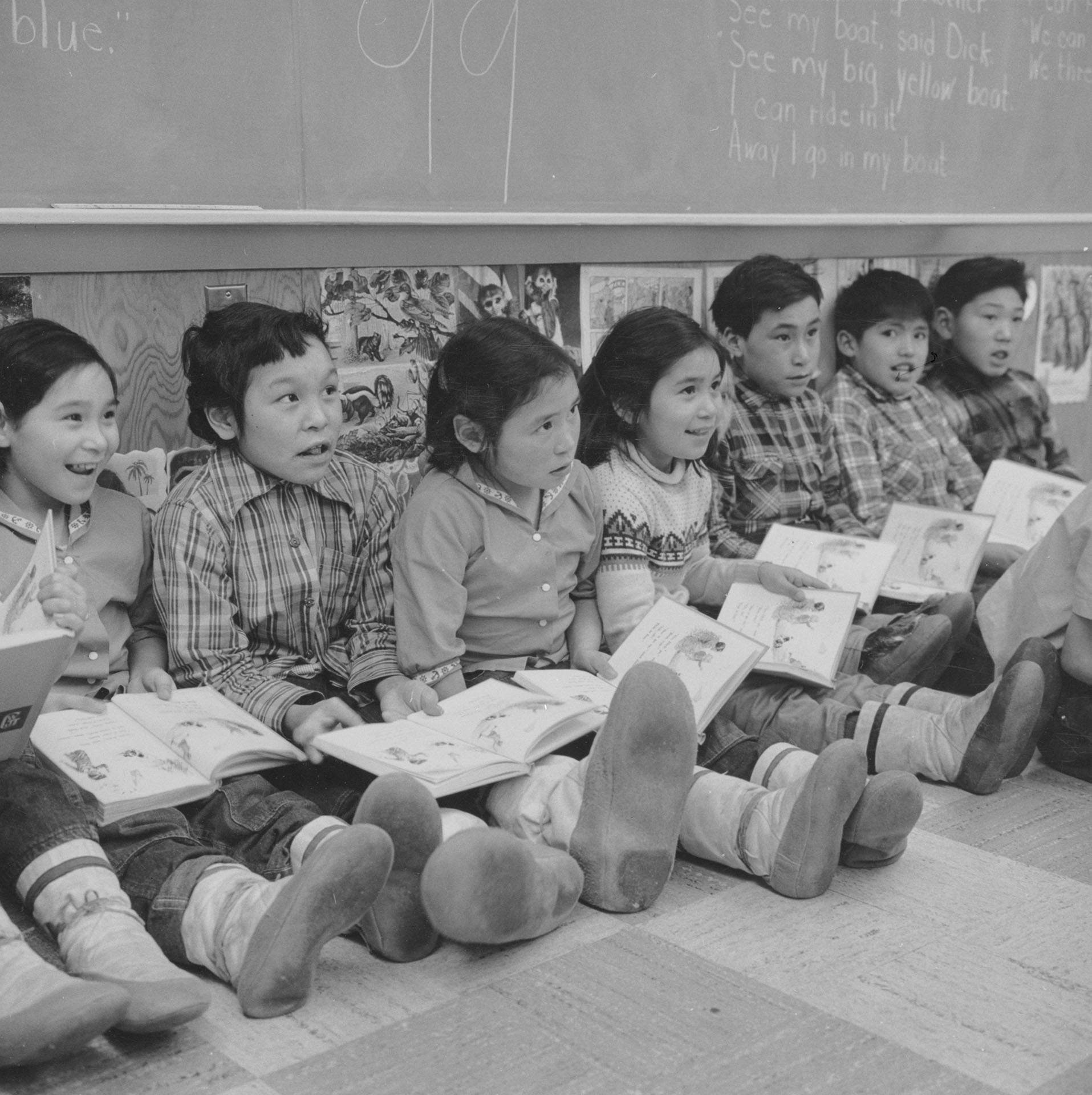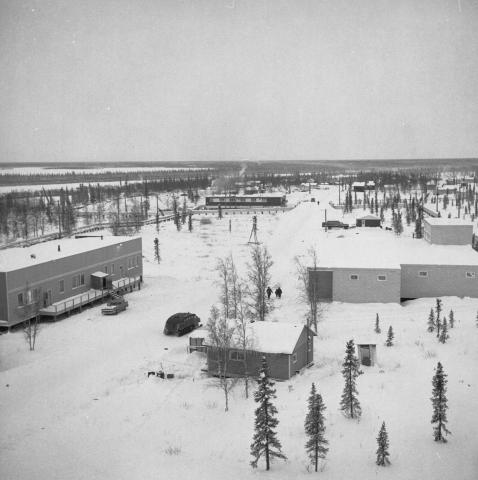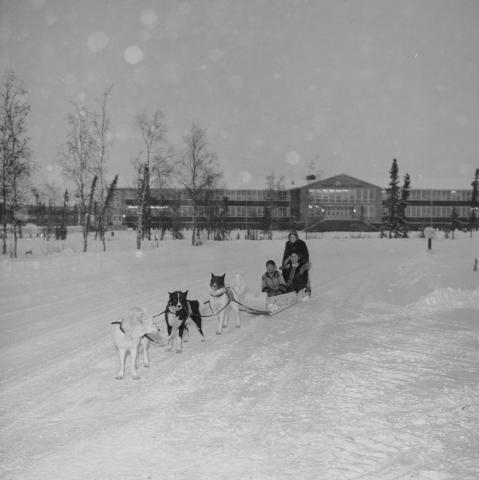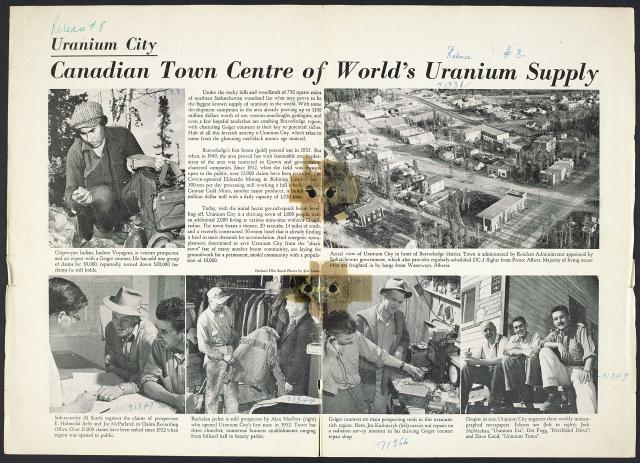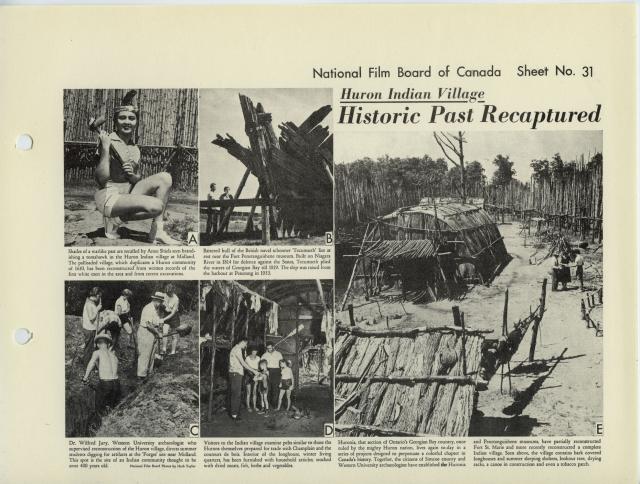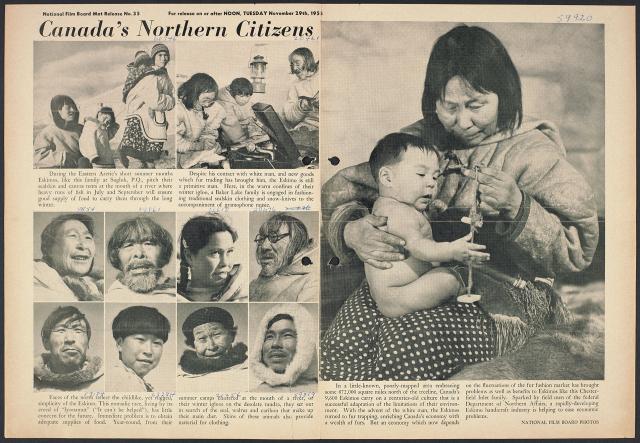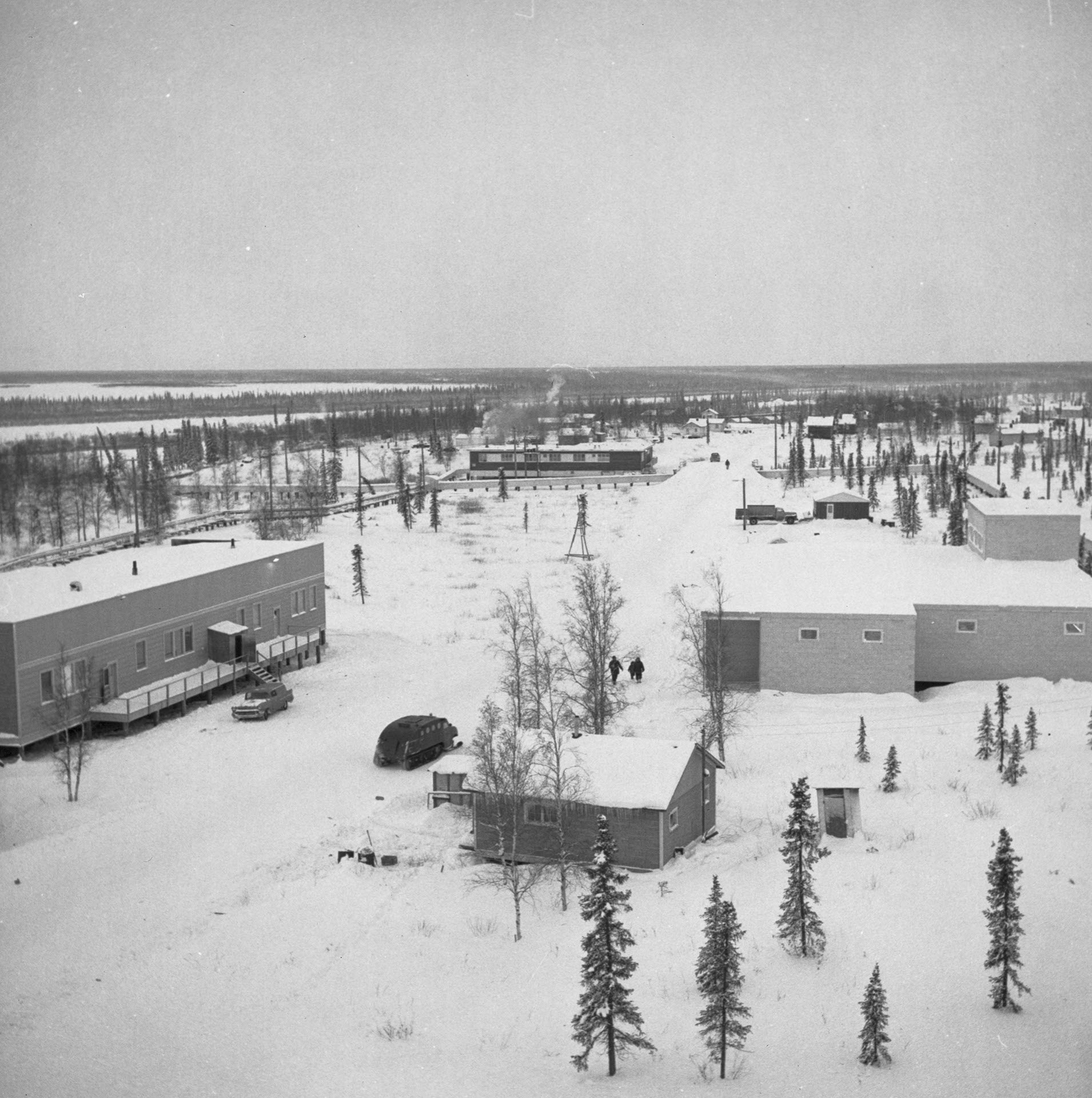
Photostory #257: New Town in Land of Tomorrow: "Place of Man" on Rim of Arctic
Photographers
Maker
National Film Board of Canada
Release Date
April 19, 1960
Collection
CMCP fonds
Credit Line
Canadian Museum of Contemporary Photography fonds, National Gallery of Canada Library and Archives
Main Text
A $35 million, 5-year experiment to build a modern town on the rim of the Arctic is nearing the first stage of completion. Inuvik, an Eskimo word meaning "place of man", rises high on a bank of the Mackenzie River, 33 miles eastward from Aklavik and one hundred miles north of the Arctic circle. In 1955 a team of government surveyors and engineers recommended the site for a town to serve as nerve centre for the western Arctic . . . a place where the educational, medical and economic needs of Eskimos and Indians could be met and (incidentally) a pilot study for the creation of other towns to follow as Canada opens up the vast resources of her north. Unlike neighbouring Aklavik, gradually sinking in silt and sliding into the greedy Mackenzie, Inuvik has gone up on relatively stable ground, free from the danger of river bank erosion. There is a 6000-foot airstrip nearby and good wharf facilities. No one could claim the land is a sub-divider's dream, but the site is as nearly perfect as any that could be found in the difficult building conditions of the Mackenzie Delta. Here the permafrost goes down one thousand feet -- an impossible barrier to the laying of essential plumbing and sewage pipes -- and a construction headache of the first order. Fortunately, the base of the permafrost at Inuvik is largely gravel, which does not heave like a silt foundation. The town is raised on stilts: 15 to 30 foot piles, steam -- blasted into the permafrost. Inuvik has a fluctuating population of around 1,250, composed of Eskimos, Indians, missionaries, government officials and transient construction men. The 275-acre town (administrative centre for 350,000 square miles of territory) boasts more than 150 residential dwellings, numerous federal buildings -- including a modern school with an enrolment to date of 600 pupils -- 3 churches, an 80-bed hospital, radio station and movie house. Technically, one of the largest deserts on earth, Canada's arctic region (which paradoxically contains more lakes than all the rest of the world put together) is not a perpetually frozen waste. Inuvik lies across the undulating forest fringe generally known as the "tree line". In landscaping the town advantage has been taken of nearby stands of spruce, birch, and poplar. In its brief hot summers colourful mosses and delicate native flowers blossom in abundance. During the annual 60 frost-free days, vegetable gardens have been successfully cultivated. While the winters are long and cold, snowfall is moderate. Householders shovel away less than half the snow that normally falls on Ottawa or Montreal. Inuvik is expected to lie focal point in economic development of Canada's northland. It serves an area rich in natural resources. There are oil and gas deposits within 300 miles of the town; geologists' reports indicate a variety of mineral wealth.
Subjects:
Locations:

